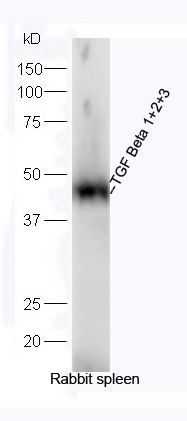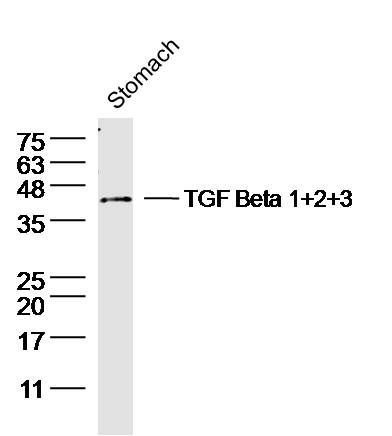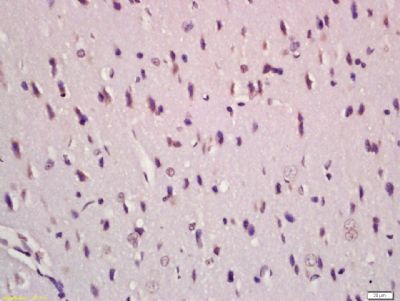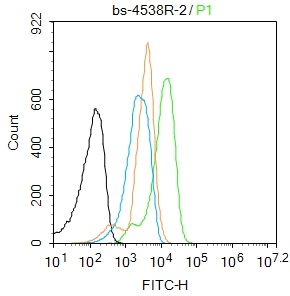[IF=4.546] Bin Zeng. et al. Dietary Soy Protein Isolate Attenuates Intestinal Immunoglobulin and Mucin Expression in Young Mice Compared with Casein. Nutrients. 2020 Sep;12(9):2739 WB ; Mouse.
[IF=6.832] Yanhong Li. et al. Therapeutic potential of human umbilical cord mesenchymal stem cells on aortic atherosclerotic plaque in a high-fat diet rabbit model. Stem Cell Res Ther. 2021 Dec;12(1):1-14 IHC ; Rabbit.
[IF=4.423] Terzuoli E et al. Targeting endothelial-to-mesenchymal transition: the protective role of hydroxytyrosol sulfate metabolite. Eur J Nutr. 2019 Feb 6. WB ; Human.
[IF=1.632] Liu Y et al. Isolation and characterization of ovine monocyte-derived macrophages from peripheral blood.(2018)Vet Immunol Immunopathol. Nov;205:83-92. IF ; Sheep.
[IF=1.069] He, Hongying, et al. "Carbamylated erythropoietin ameliorates cardiomyopathy via ERK (44/42) activation in rats with diabetic cardiomyopathy." Int J Clin Exp Med 10.10 (2017): 14213-14222. IHSLCP ; Rat.
[IF=0] Komai M et al. Pathological Study on Epithelial-Mesenchymal Transition in Silicotic Lung Lesions in Rat. Vet Sci. 2019 Aug 30;6(3). pii: E70. IHSLCP&WB ; Rat.
[IF=0] Canbolat İP et al. The Protective Role of Resveratrol on Diabetic Cardiomyopathy in Streptozocin Induced Diabetic Rats. EJCM 2019;7(2):84-88 IHC ; Rat.
[IF=0.205] Li XP et al. LPS induces activation of the TLR4 pathway in fibroblasts and promotes skin scar formation through collagen I and TGF-β in skin lesions. Int J Clin Exp Pathol 2019;12(6):2121-2129. WB,ICF&IHSLCP ; Mouse.
[IF=4.302] Ju B et al. miR-193a/b-3p relieves hepatic fibrosis and restrains proliferation and activation of hepaticstellate cells. J Cell Mol Med. 2019 Apr 3. WB ; Human.
[IF=3.483] Shen Z et al. Insights into Roseburia intestinalis which alleviates experimental colitis pathology by inducing anti-inflammatory responses. J Gastroenterol Hepatol. 2018 Oct;33(10):1751-1760. IHSLCP ; Mouse.
[IF=0.44] Sutrisno, Sutrisno, et al. "The effect of genistein on TGF-β signal, dysregulation of apoptosis, cyclooxygenase-2 pathway, and NF-kB pathway in mice peritoneum of endometriosis model." Middle East Fertility Society Journal (2017). IHSLCP ; Mouse.



